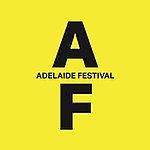Norwood Oval

Norwood Oval (currently known as Coopers Stadium due to sponsorship from the Adelaide-based Coopers Brewery) is a suburban oval in the western end of Norwood, an inner eastern suburb of Adelaide, South Australia. It is owned by Norwood, Payneham & St Peters Council but managed by the Norwood Football Club. Though mainly used for Australian rules football, the oval has been used for a variety of other sporting and community events including baseball, soccer, rugby league and American football. It is the home ground for the Norwood Football Club ("The Redlegs") in the South Australian National Football League (SANFL) and the primary home ground of the Adelaide Crows in AFL Women's (AFLW). The oval is one of two sporting venues in Adelaide to carry the name of Coopers Stadium. The other is the soccer specific Hindmarsh Stadium which also has naming rights sponsorship from Coopers Brewery.
Excerpt from the Wikipedia article Norwood Oval (License: CC BY-SA 3.0, Authors, Images).Norwood Oval
Woods Street, Adelaide Norwood
Geographical coordinates (GPS) Address External links Nearby Places Show on map
Geographical coordinates (GPS)
| Latitude | Longitude |
|---|---|
| N -34.919722222222 ° | E 138.63055555556 ° |
Address
Norwood Oval
Woods Street
5067 Adelaide, Norwood
South Australia, Australia
Open on Google Maps





